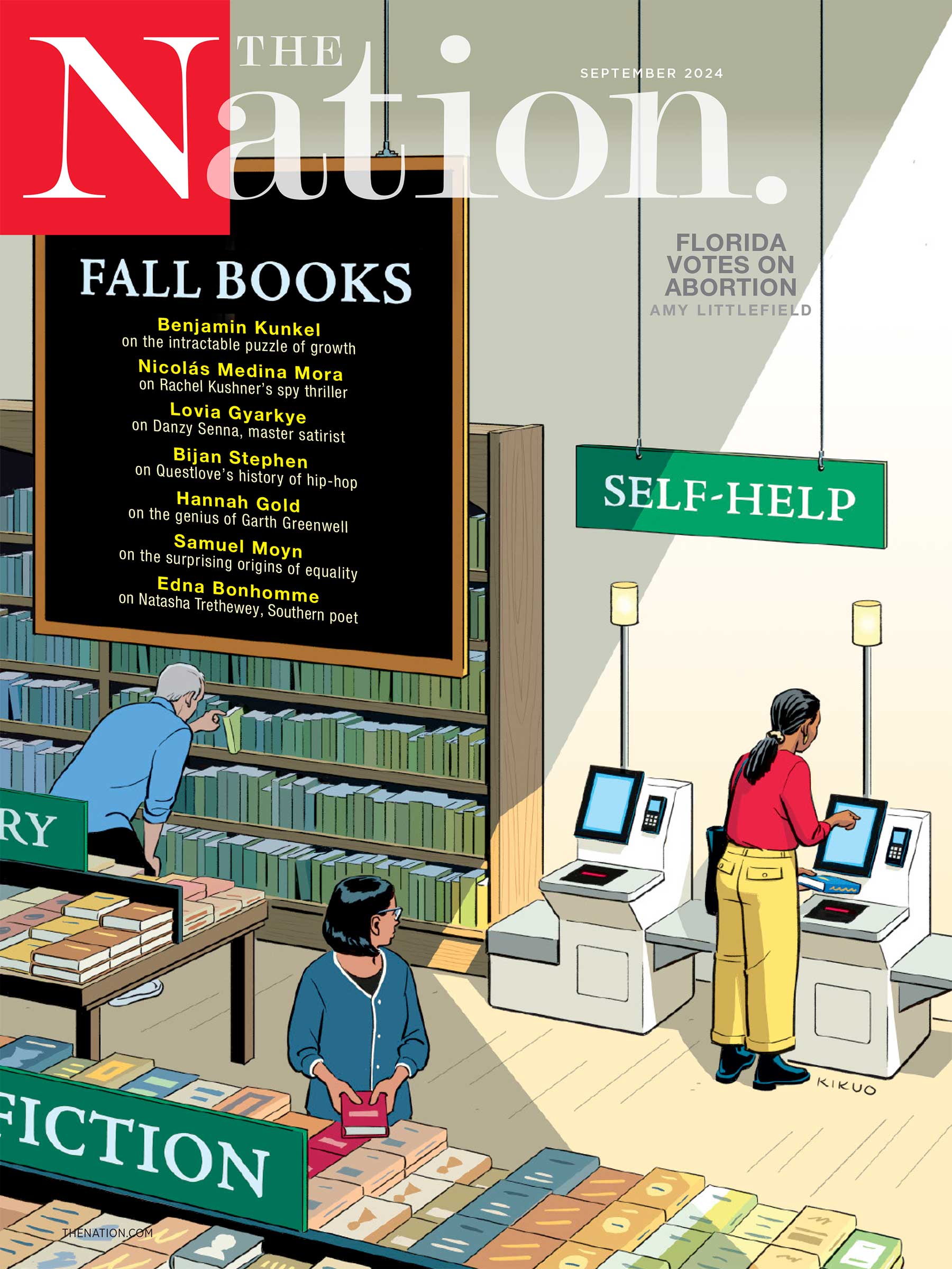

A world not divided by militarized borders would help form a world where sustainability and justice take precedence over extraction and exploitation.

Ad Policy This article appears in the March 2024 issue, with the headline “Seven Arguments for Open Borders.” Most arguments for open borders begin by addressing counterarguments, trying to assuage fears of overcrowding, overrun public services, tanking economies, or generalized chaos. It’s important work; careful counterarguments can deflate nativist fearmongering. The case for open borders, however, must also be a positive one, explaining why the freedom to move—coupled with the freedom and possibility to remain—is a necessary good, and why a world not divided into exclusive nation states with militarized borders would be more egalitarian, would promote and cultivate diversity, and would help form a world where sustainability and justice take precedence over extraction and exploitation. Adapted from The Case for Open Borders (2024), by John Washington. Published by Haymarket Books. When we open borders, there won’t be an overwhelming influx of migrants, wages won’t plummet, there won’t be a paralyzing run on government services, and crime won’t increase. All true—but policies are rarely won by defining what they won’t do. Unauthorized migration, whether it is asylum seekers fleeing for their lives or the poor for better opportunity, should be understood as a radical political act. It is an individual act often driven by necessity, but it is also a subversion of a violent system. Colonizers in the United States saw themselves, and were celebrated, as subjects bucking oppressive rule. Today’s migrants, exercising their fundamental right of mobility, are migrating in a much more peaceful manner than the settlers and colonizers of yore. Today’s migrants are not threats to freedom, but much-needed threats to a global system of oppression. In their mere movement, they are freedom fighters. Opening borders is possible. A necessary step toward guaranteeing and exercising the right to free movement includes understanding its implication and promises. Below is a far from exhaustive list of some of the simple arguments about why open borders would be an economic, environmental, and ethical boon.
Historically speaking, closed borders are still in short pants. For the first century of the United States’ existence, there were zero federal immigration laws, and there were no substantial fences or walls along the US-Mexico border until the late 1990s. Immigration scholar Reece Jones calculates that as recently as 1990 there were only 15 international border walls throughout the world. That number today is likely in the 80s. But change works in both directions, and the number may soon fall back to 15, or to zero.

Borders haven’t always been. And they certainly haven’t always been as they are now—militarized zones where human beings are stripped of their rights merely for crossing an imaginary line. Nor will borders, as they are now, always be.
Economic studies across the political spectrum tell us that immigrants create more jobs than they take, and that the ones they do snag are essential for the basic functioning of much of Western society. A US Department of Labor study conducted under the Bush administration noted that the perception that immigrants take native jobs is “the most persistent fallacy about immigration in popular thought.” A comprehensive 2016 report from Cornell University found that migration resulted in “little to no negative effects on overall wages and employment of native-born workers in the longer term.” Much of the confusion comes from the “lump of labor” fallacy, which the Cato Institute defines as the “fundamental misconception that there is a fixed amount of work in a society.” As economist Jonathan Portes explains, “It’s true that, if an immigrant takes a job, then a British worker can’t take that job—but it doesn’t mean he or she won’t find another one that may have been created, directly or indirectly, as a result of immigration.” British Revenue and Customs figures show that from 2013 to 2014, recent arrivals to the United Kingdom paid £2.54 billion more in income tax and national insurance than they received in tax credits or child benefits. The UK’s Office of Budget Responsibility has estimated that migrants’ labor contribution is helping to grow the economy by an additional 0.6 percent a year. That economic growth equals more jobs all around.
In 2016, immigrants contributed an estimated $2 trillion to the US GDP. Two years later, economists tabulated that immigrants added over $450 billion to state, local, and federal taxes. The same year, immigrants wielded more than $1.2 trillion in spending power in the United States, by which they purchased groceries, clothes, cars, homes, appliances, and all sorts of useful and useless goods from both local and big businesses. Meanwhile, proposed cuts to US legal immigration, economists estimate, could tank GDP by 2 percent over 20 years, shrink growth by over 12 percent, and eliminate more than 4.5 million jobs. American Rust Belt states would be hit particularly hard, as they rely on immigration to stabilize populations and revive economies. For all they pour in, immigrants can’t collect on a lot of public services and tend to use the ones to which they do have access much less than natives. For instance, according to a 2015 study, immigrants use emergency room services at half the rate of native residents. In the United States, authorized migrants must pay into the welfare system for at least five years before they can draw any benefits. Studies have estimated that migrants to the United States pay tens of billions more in payroll taxes than they receive in Social Security benefits. Unauthorized migrants, meanwhile, almost exclusively pay into the pot—unable to draw much of anything out. Immigrants don’t hurt the economy, though they are often hurt by the economy. Ad Policy
In 1917, as some of the first lengths of wall and fence were being raised along the US-Mexico border, and as emergency measures were put in place to limit migration, a new law increased the head tax at the border to $8 (equivalent to $162 today) and, for the first time, expanded the tax to Mexican citizens. As Reece Jones notes, “The result was the emergence of smuggling networks, which would take people across the border for half that amount, saving the laborers money.” For over a century, increased immigration enforcement and border militarization have led to expanded and more profitable smuggling networks. Prohibitions against drugs (including alcohol) and anti-immigration crackdowns created the ultraviolent transnational paramilitary networks that have plagued large parts of Mexico, Central and South America, and border regions throughout the hemisphere for decades. State forces and politicians criminalize drugs and migration even as they back and create criminal networks that traffic drugs and migrants, accept bribes, and contribute to a spiral of violence that has, in Mexico alone in the last 20 years, resulted in the deaths of nearly half a million people and the disappearance of almost one hundred thousand more. The border has not kept the crisis at bay; it has helped to create it.